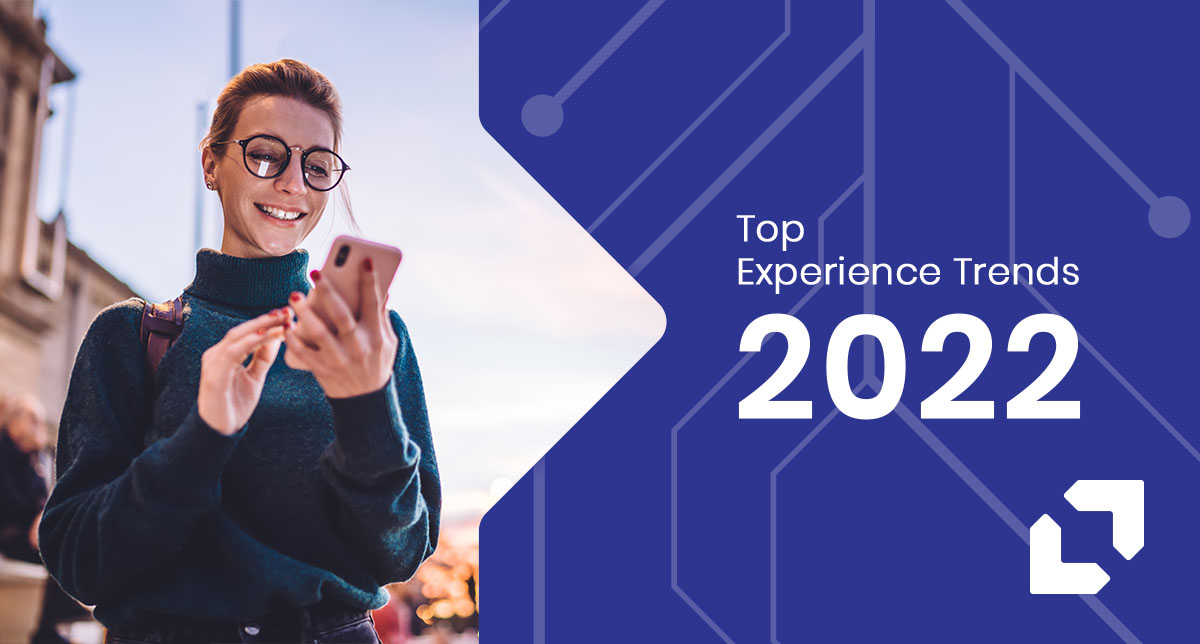With record amounts of customer data at their fingertips – and new technologies making it easier to access it effectively– brands must offer a more sophisticated customer experience. And in 2022, customers will expect to take full advantage.
Customer-first mindsets will guide business decisions in 2022 as the experience economy reaches a whole new level.
Think augmented reality museum exhibits – which bring art to life in new ways. Or quick, easy and line-up-free fast-food orders, made from the convenience of your mobile phone. These types of experiences make a product or service stand out – which is likely why 76% of executives plan to make customer experiences a critical priority and why today’s customers, including 75% of millennials, are willing to pay a premium for them.
If you’re planning to enhance your customer experience game in 2022, our General Managers have three trends you should keep in mind throughout the planning process:
Trend 1: The In-person experience will become more digital.
Over the last few years – and 2021 in particular – our lives have become digitized in countless different ways. From mobile vaccine passports to restaurant menus you access via QR code, you can’t go far these days without your mobile in hand.
In 2022, this trend will continue as brands integrate mobile-first technologies such as Radio Frequency Identification (RFID), mobile apps, and mobile-driven touchless displays to enhance their customers’ safety, convenience, and comfort.
We’re already seeing this trend across industries – but most noticeably in retail, travel and tourism, and financial services.
“Leisure travel is coming back, but it’s different this time around,” says Scott Wassmer, GM Americas. “The hangover from the pandemic has made people more conscious of the need to distance themselves from the crowd.”
26% of travelers find it frustrating that experiences don’t integrate in-person and online in the US and Canada alone. Globally, 76% of travelers say they now prefer things like contactless identity verification and security clearance experiences when traveling. This, Wassmer says, will lead to an influx in touchless technologies in what had previously been in-person or high-touch environments.
Trend 2: Product-focused companies will position themselves as lifestyle brands by offering value-driven experiences.
A unique customer experience will also help brands differentiate themselves in competitive markets where many products and offerings are similar – like insurance and banking.
“As these businesses put customer experience at the forefront of conversations, having the right digital tools will become more important than ever,” says Yvette Yanne, GM Asia Pacific. “These companies will have to become more agile when doing business, understand new customer groups and behaviors, and identify innovative technology solutions to seamlessly replace legacy technology platforms and drive an engaging customer experience.”
As they do so, many businesses will undergo a brand reinvention in their quest to win customers – one that will see many transition into lifestyle brands that offer solutions based on shared values.
For example, auto insurers like Cuvva offer a hard-to-find insurance solution for individuals – and they do so through a convenient app. As a digital-only auto-insurance app, Cuvva identified a challenge every individual borrowing a vehicle faces. It was hard to find insurance that met their needs and sign up for it when they needed it only. By making an app that allows customers to sign up, select the car, and pick a quote in ten minutes, they created more than just a convenient solution. They’ve positioned themselves as a lifestyle brand that cares about their customers’ values and lifestyle choices.
Trend 3: Consumer expectations of great experiences will become fiercer.
As the marketplace becomes more experience-oriented, the competitive playing field will become broader.
“Gone are the days when customers compared the experience of your brand with those in the same category,” says Wassmer. “In the experience economy, customers will compare yours against the best digital experiences out there - like those of Netflix or Uber.”
Understanding this, in 2022, brands will look for new and innovative ways to converge technologies–and create the best possible experience out there, not just the best experience in a specific vertical or industry.
The road ahead
Today’s changing business culture brings forth endless opportunities. We hope the insights shared in Trends 2022 series help you take advantage of these opportunities. If you’d like to dive deeper into a particular trend, our experts are just a phone call away.


